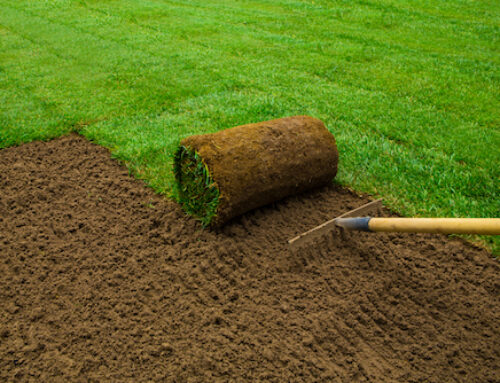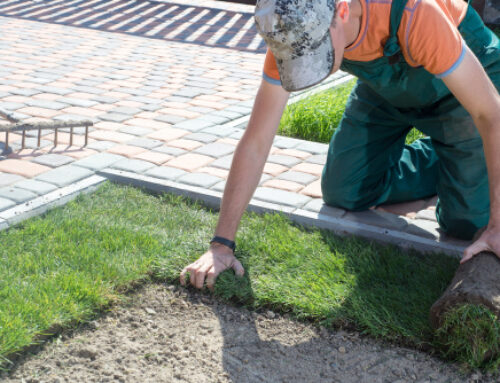Achieving a lush and vibrant lawn often involves decisions about sod installation. Whether you’re revamping your garden or establishing a new lawn, the choice between DIY sod installation and hiring professionals is crucial.
Both avenues offer distinct advantages and drawbacks, influencing the outcome, cost, and effort required. This article aims to delve into the pros and cons of DIY sod installation versus hiring professionals to help individuals make informed decisions when considering this essential aspect of landscaping.
DIY Sod Installation
Pros:
Cost Savings:
One of the primary appeals of DIY sod installation is cost-effectiveness. By purchasing and installing sod yourself, you can potentially save on labor costs associated with hiring professionals.
Flexibility and Control:
DIY projects allow for greater flexibility and control over the installation process. You can set your schedule, choose the specific type of sod, and control the pace and methods of installation according to your preferences.
Learning Experience:
Taking on a DIY sod installation project can be a valuable learning experience. It provides an opportunity to acquire new skills, understand the intricacies of lawn care, and develop a deeper connection with your garden.
Personal Satisfaction:
Completing a sod installation project independently can be immensely satisfying. Witnessing the transformation of bare ground into a lush lawn can bring a sense of accomplishment and pride.
Cons:
Physical Labor:
Installing sod is physically demanding work. It involves lifting and carrying heavy rolls of sod, extensive digging, leveling, and precise installation, which might be challenging for individuals without prior experience or physical limitations.
Time-Consuming:
DIY sod installation can be time-consuming, especially for larger areas. Proper soil preparation, laying sod meticulously, and post-installation care requires significant time and effort.
Skill and Expertise:
Achieving optimal results requires a certain level of expertise. Without prior knowledge, there’s a risk of improper installation, leading to issues like uneven growth, poor rooting, or the need for rework.
Professional Sod Installation
Pros:
Expertise and Experience:
Professional sod installers bring specialized expertise and experience to the table. They possess the knowledge and skills for proper soil preparation, precise installation techniques, and post-installation care.
Time-Efficiency:
Hiring professionals can expedite the installation process. They have the equipment, workforce, and efficiency to complete the project swiftly, making it an ideal choice for those with time constraints.
Quality Assurance:
Professionals ensure high-quality results. They have access to premium sod varieties, employ proper installation techniques, and offer guarantees or warranties on their work, providing assurance for a healthy and thriving lawn.
Reduced Physical Strain:
By hiring professionals, homeowners can avoid the physical strain associated with sod installation. Professional teams handle all the heavy lifting and labor-intensive tasks.
Cons:
Cost:
Professional sod installation typically involves higher costs compared to a DIY approach. The expenses encompass labor fees, materials, and possibly additional charges for specialized services.
Limited Control:
Homeowners relinquish some control over the process when hiring professionals. While they accommodate preferences, certain aspects might not align with the homeowner’s exact vision.
Dependency on Scheduling:
Depending on the company’s availability, scheduling the installation might be subject to their timelines, potentially causing delays.
Common Mistakes in DIY Sod Installation
Embarking on a DIY sod installation project can be both rewarding and challenging. However, avoiding common mistakes is crucial to achieving a lush, vibrant lawn.
1. Neglecting Soil Preparation:
– Explanation: Skipping proper soil preparation can hinder root development and overall turf health.
– Advice: Take time to assess soil quality, remove debris, and amend soil if necessary.
2. Inadequate Measurement and Planning:
– Explanation: Underestimating the area or not planning for irregular shapes can lead to insufficient sod, delays, and extra costs.
– Advice: Measure accurately, account for curves, and plan for extra sod to accommodate irregularities.
3. Improper Installation Techniques:
– Explanation: Incorrectly laying sod can result in uneven surfaces, air pockets, and poor establishment.
– Advice: Stagger seams, tightly butt edges, and roll the sod after installation to ensure good soil contact.
4. Ignoring Watering Guidelines:
– Explanation: Over or under-watering can jeopardize the rooting process and turf establishment.
– Advice: Follow recommended watering guidelines, especially during the initial weeks.
5. Choosing the Wrong Sod Type:
– Explanation: Selecting sod unsuitable for your region or soil conditions can lead to a lackluster lawn.
– Advice: Research and choose sod varieties that thrive in your specific climate and soil type.
6. Rushing the Process:
– Explanation: Impatience can compromise the success of your sod installation by not allowing proper root establishment.
– Advice: Adhere to recommended timelines for each step, from soil preparation to mowing.
7. Forgetting about Grading:
– Explanation: Neglecting proper grading can result in poor drainage and water pooling issues.
– Advice: Ensure a slight slope away from structures and fix any drainage issues before laying sod.
8. Overlooking Weed Control:
– Explanation: Failing to address weeds before installation can lead to competition for resources and an unkempt appearance.
– Advice: Treat the area for weeds before laying sod to create a clean canvas for your new lawn.
9. Ignoring Professional Advice:
– Explanation: Disregarding guidance from experts or experienced individuals can lead to avoidable mistakes.
– Advice: Seek advice from local experts, nurseries, or extension services to enhance your chances of success.
10. Inadequate Aftercare:
– Explanation: Neglecting post-installation care can impact your lawn’s long-term health and appearance.
– Advice: Follow recommended aftercare practices, including fertilization, mowing, and ongoing maintenance
What You Need for a Successful Installation?
To ensure success, it’s essential to have the right tools and materials on hand.
1. Quality Sod:
– Explanation: Start with healthy, quality sod appropriate for your climate and soil conditions.
– Advice: Purchase sod from reputable suppliers, ensuring it’s freshly cut and free of diseases or pests.
2. Measuring Tools:
– Explanation: Accurate measurements are crucial for determining the amount of sod required.
– Advice: Use a measuring tape or wheel to measure the area accurately, considering any irregularities.
3. Soil Amendments:
– Explanation: To ensure a nutrient-rich and well-draining foundation, prepare the soil with amendments.
– Advice: Include organic matter, such as compost, and address soil deficiencies based on a soil test.
4. Rakes and Shovels:
– Explanation: Essential for leveling the soil and creating a smooth surface for sod installation.
– Advice: Use a landscape rake for grading and leveling and a square shovel for cutting and removing soil.
5. Watering System:
– Explanation: Adequate water is crucial for the establishment of sod.
– Advice: Ensure access to a reliable watering system, whether a sprinkler system or hoses with sprinklers.
6. Sod Cutter or Edger:
– Explanation: Helps create clean edges and facilitates the removal of existing grass or weeds.
– Advice: Rent or purchase a sod cutter or manual edger for precise cutting and removal.
7. Landscape Fabric:
– Explanation: Suppresses weed growth and provides a barrier between soil and sod.
– Advice: Lay landscape fabric before installing sod to prevent weed penetration while allowing water and nutrients to pass through.
8. Roller:
– Explanation: Ensures good soil-to-sod contact for optimal rooting.
– Advice: Roll the installed sod with a lawn roller to eliminate air pockets and create a firm connection with the soil.
9. Stakes and String:
– Explanation: Helps maintain straight lines and proper spacing during installation.
– Advice: Use stakes and string to create a grid for aligning and laying sod evenly.
10. Fertilizer:
– Explanation: Provides essential nutrients for the initial growth stages.
– Advice: Apply a starter fertilizer before laying sod and follow up with a fertilization schedule based on your specific grass type
Final Thoughts
Deciding between DIY sod installation and hiring professionals involves weighing several factors, including budget, time, expertise, and desired outcomes.
DIY projects offer cost savings, flexibility, and a sense of accomplishment but require significant physical effort, time, and a learning curve. On the other hand, professional installation ensures expertise, saves time and guarantees quality but comes at a higher cost and might limit control over the process.
Ultimately, the choice depends on individual preferences, capabilities, and the importance placed on factors like cost, time, and quality. For those with the expertise and willingness to invest time and effort, DIY sod installation can be rewarding.
Conversely, homeowners seeking convenience, efficiency, and guaranteed results may opt for professional sod installation. Whatever the choice, a healthy and beautiful lawn remains the ultimate goal, achievable through careful consideration and informed decision-making.





